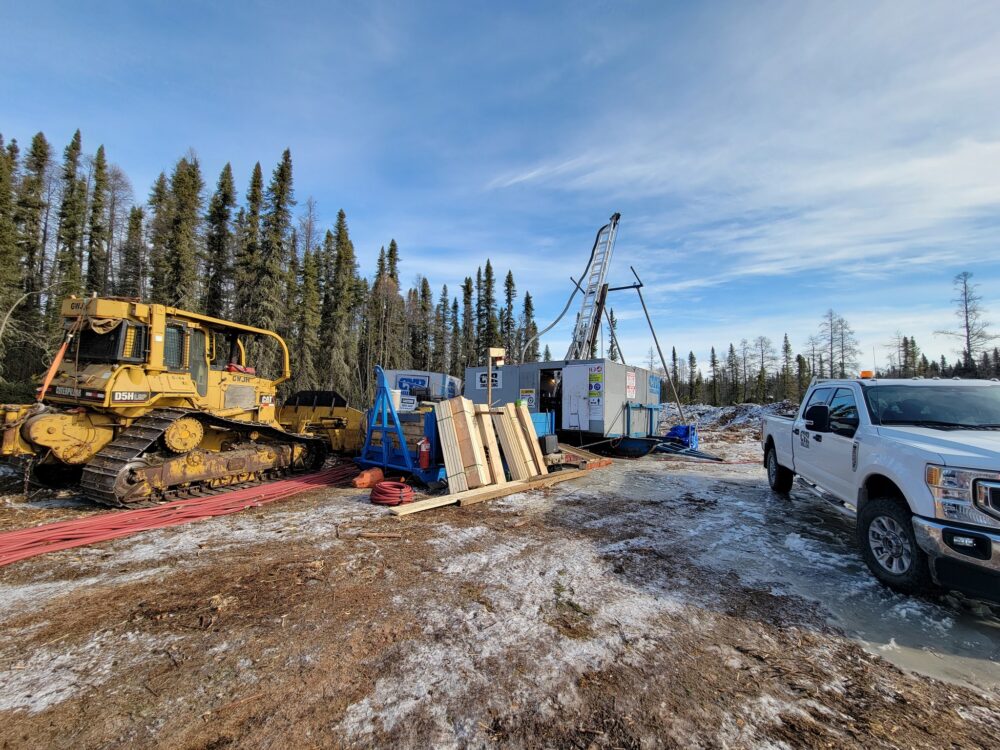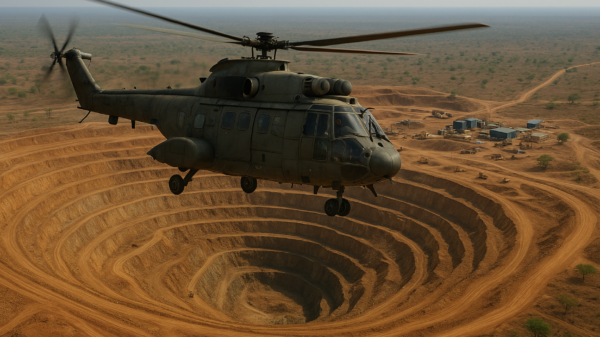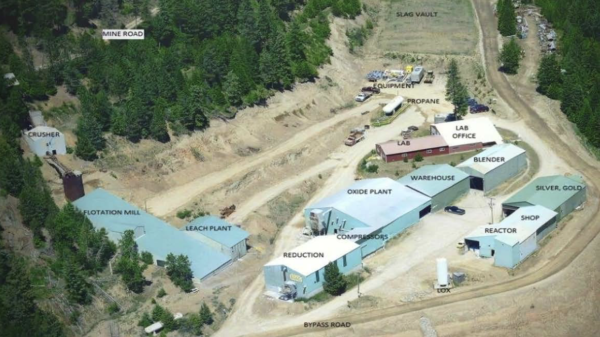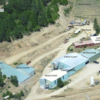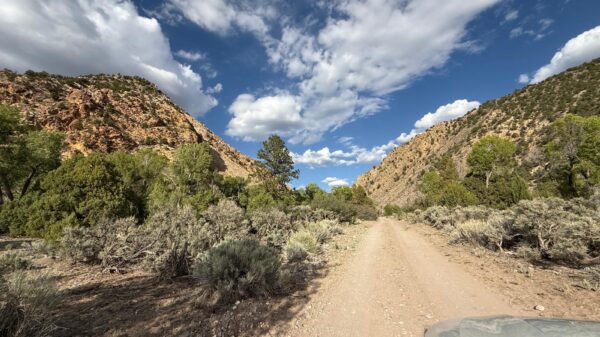CanAlaska Uranium Ltd. (TSXV: CVV) (OTCQX: CVVUF) (Frankfurt: DH7N) transferred its field team, drill crew and equipment to the Geikie project in the Athabasca Basin to prepare for the summer drilling campaign.
The company stated on Tuesday that the drill program will concentrate on examining shallow, high-priority targets identified from recent high-resolution airborne surveys.
These targets have been selected based on a combination of prospecting, structural mapping and reviewing historical data. The initial drill program is designed to reach a total depth of 2,000 meters, comprising eight drill holes with an approximate depth of 250 meters each.
The primary focus of the drill program will be on a 15-kilometer-long conductor system that trends northeast. This conductor system has been recently discovered through a versatile time electromagnetic (VTEM) survey conducted on the property.
Three specific high-priority target areas have been identified within this conductor system, all three of which are situated along the 15-kilometer-long conductor trend.
“From inception of the project through to this first drilling program, the company has been diligent with its methodical approach to exploration and developing very high-quality targets for testing,” said Cory Belyk, CEO for CanAlaska.
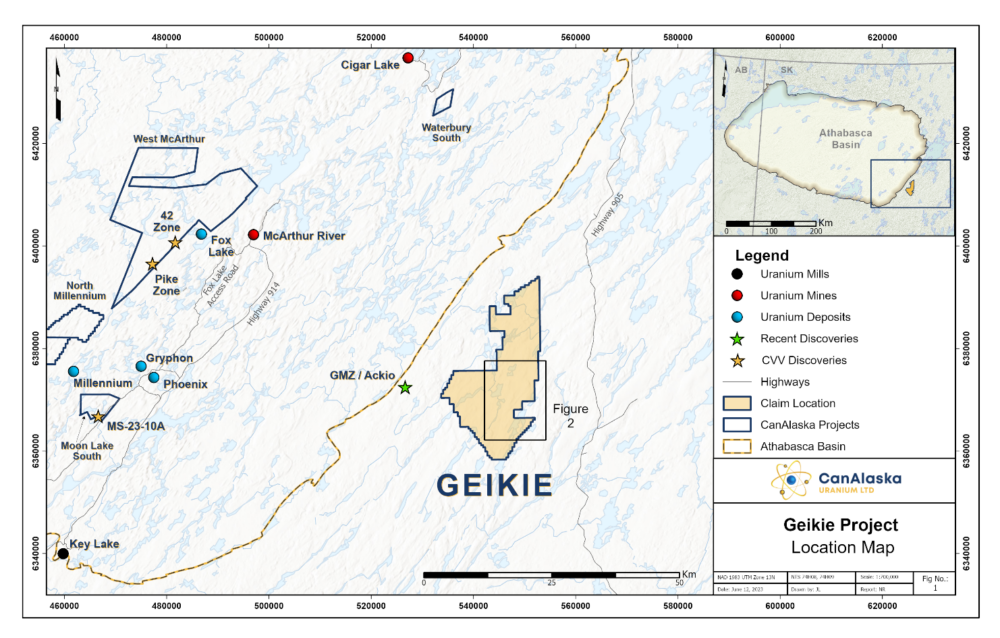
Project location map. Image via CanAlaska Uranium.
Read more: CanAlaska Uranium starts $10M winter drill program in Athabasca Basin
Read more: Standard Uranium changes business model from explorer to project generator
Uranium exploration in the area has been limited
The Geikie project is located approximately 10 kilometers east of the Athabasca Basin margin and 10 kilometers west of Highway 905.
Exploration for uranium in the project area has been limited, with the majority of previous efforts focusing on base metals between 1967 and 1980. During this regional exploration, several mineralized showings were discovered in the Mud Lake and Marina areas.
The Mud Lake showing, which contains uranium and molybdenum, yielded rock chips with anomalous grades of up to 0.225 per cent uranium, 5.2 per cent molybdenum and 1.4 per cent copper.
At the Marina prospect, which targets lead and zinc, outcrop samples displayed anomalous mineralization of up to 2.03 per cent lead, 7.2 per cent zinc and 0.93 ounces per ton of silver.
Recent ground prospecting activities confirmed the presence of uranium and molybdenum in the Mud Lake area, with grab samples containing up to 3,250 parts per million molybdenum and 0.21 per cent uranium.
The Geikie project is currently being sole-funded by Basin Energy Limited (ASX: BSN) under an option earn-in agreement with the Company.
Other companies operating in the Athabasca Basin include SKRR Exploration (TSXV: SKRR) (FSE: B04Q), F3 Uranium Corp. (CSE: FUU) NexGen Energy (TSX: NSE) and Skyharbour Resources Ltd. (TSXV: SYH) (OTCQX: SYHBF) (FSE: SC1P).
CanAlaska Uranium shares rose 6.8 per cent to $0.39 on Tuesday on the TSX Venture Exchange.
.
Follow Joseph Morton on Twitter
joseph@mugglehead.com

